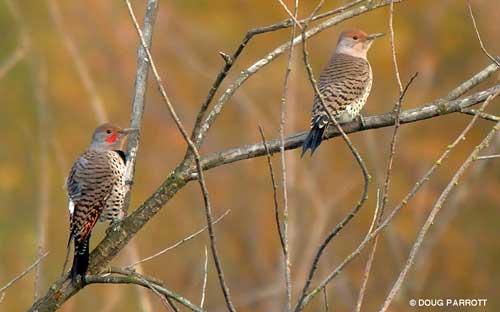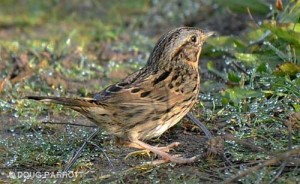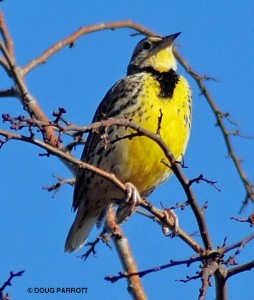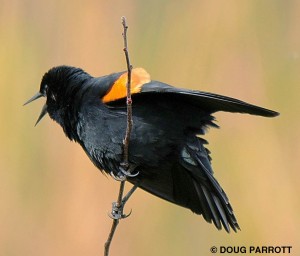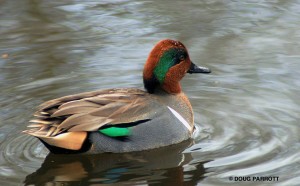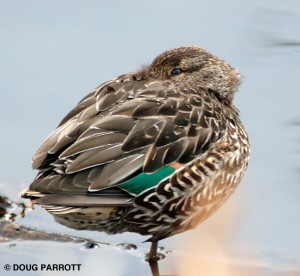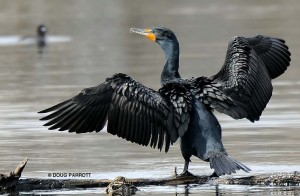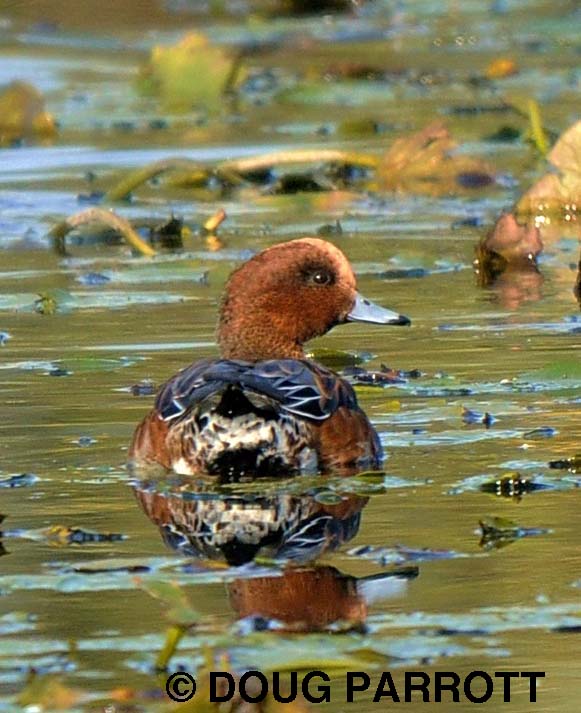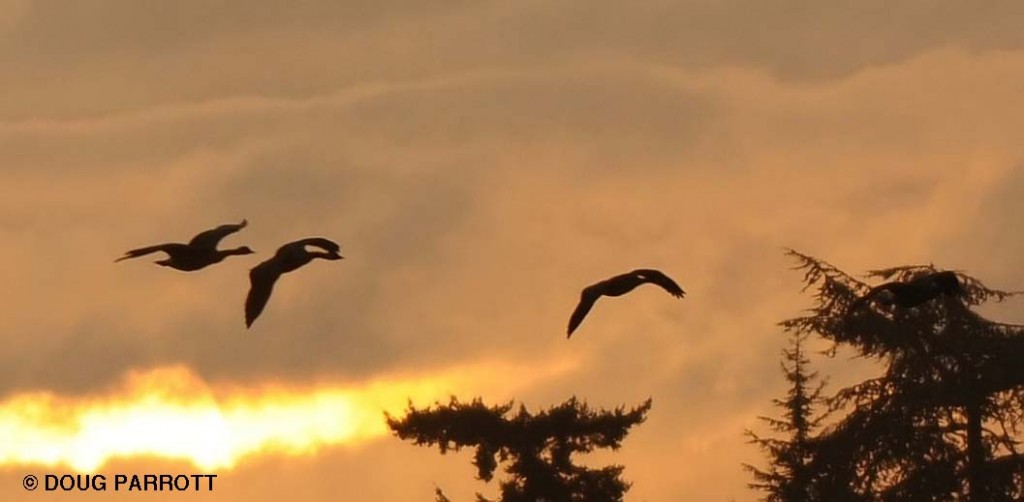Every drummer (and every mother of every drummer!) knows that at some point in your performance, you just have to cut loose and play LOUD.
So it was with the male red-shafted Northern Flicker three mornings ago. He had stationed himself on top of the light standard in the CUH parking lot, a prime location for loud drumming. Loud drumming is essential for a woodpecker male to attract a mate, because the female judges the worthiness of her partner based to a large degree on his ability to beat his head against hard surfaces.
Just as he was about to begin, a female flicker flew in and perched on the other side of the “drum.” She watched intently as he got ready to go. Then,
WHAM! WHAM! WHAM! WHAM! The flicker’s “song” went forth.
The female was apparently entranced by the strength and vigor of this guy – she seemed to just radiate admiration. The two must have sealed the bargain that very day, because this morning I saw the missus perched near the top of a dead tree in the alder grove. The male was some distance below her, excavating a nest hole.
It could not have been easy. I saw he had made a start farther down the snag,
but this had evidently not pleased the couple because she had him working away on another hole in the same tree.
It reminded me of the last time I had moved the furniture. Or to put it more accurately, the last time I had directed my husband to move the furniture. We began with the heaviest piece, a large desk. “No, dear, not there. Let’s try a little farther over. No, I don’t like that. Let’s try across the room. Hmm, doesn’t look right there, either. Maybe parallel to the window?”
Sweat began beading my husband’s wrinkled but still willing brow. Finally, I found the absolute right place for that desk. My husband smiled in triumph. No flicker could have asked for more.

